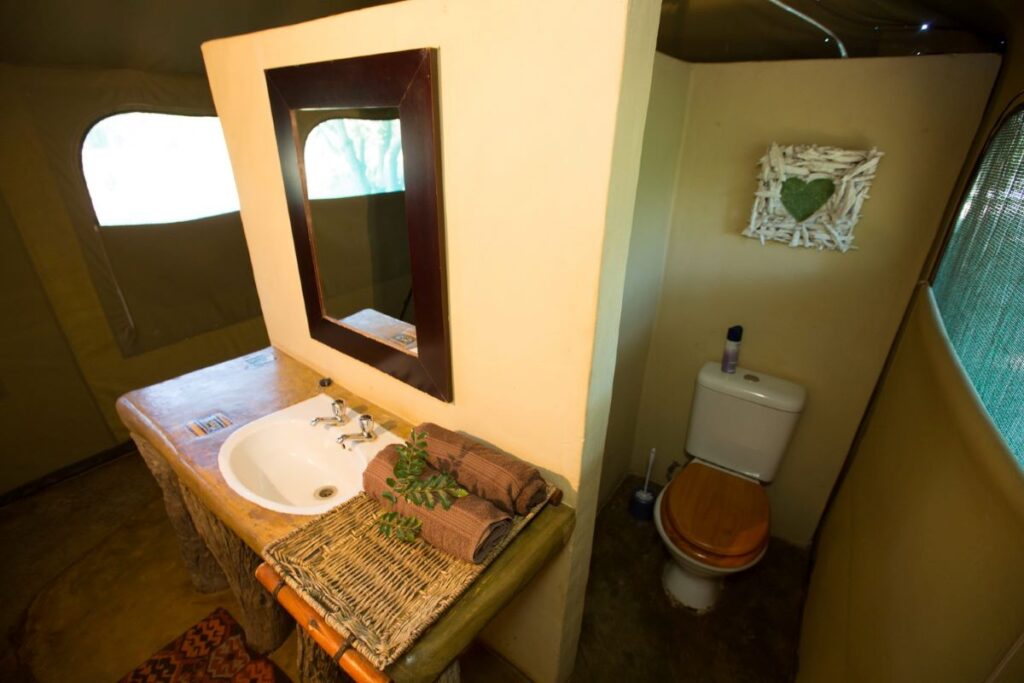
The cover image of Walking Safaris of South Africa, and banner image for this website, is actually a scene in Botswana. Taken by Emil von Maltitz, it depicts Stuart Quinn leading a walking group at sunrise in Northern Tuli Game Reserve, a place we included in the book because it’s a popular destination for South Africans and as easy to access from Johannesburg as from Gaborone or Maun.

We like the image as it depicts the distillation to the essence of the walking safari experience – humans on foot in the wilderness. We deliberately avoided having wildlife images on the book covers, as we don’t believe that viewing big game on foot is the main attraction of walks. It happens, it’s exciting, and yes, it’s an eye-catching element of the experience – and there are lots of photos of walkers with elephants and rhinos inside the book and on our websites.
Yet, it’s just one element of the walking safari experience. Tracking and approaching big game safely on foot is wonderful when it works as intended: getting close enough for good viewing without disturbing natural behaviour. Equally important is the other side of the coin – not walking, but finding a vantage point and simply sitting in silence, scanning the landscape, watchful waiting. No longer distracted by the mechanics of walking, we are more observant. And when we are quiet and still, wildlife magically appears.

High over the Motloutse River in the southern part of the Northern Tuli Game Reserve, Eagle Rock is one such vantage point. Overlooking a major movement route of the resident elephant herds, it’s in a predator and game-rich area and is a popular stop off for guests during game drives at Tuli Wilderness. Now, there is a new camp close to Eagle Rock as Tuli Wilderness have opened their “Eagle View Star Deck” camp. This adds a third walking base to their existing camps.

The name gives the clue to its design, a large raised platform that provides magnificent views over the northern ridges of Eagle Rock by day and a safe stargazing and sleep-out location at night. The camp has a small footprint with the required facilities below the deck, including hot showers, flush toilets and a fully-equipped kitchen. The deck has an enclosed area with a double bed (a couple of camp beds can be added for kids if needed) and larger groups can be accommodated in spacious dome tents with stretchers, mattresses and linen. There is 220V solar electricity to recharge electronic equipment. The outdoor area of the deck can be used for day time meals and wildlife spotting, with evening meals taken at camp fire area nearby.



Eagle View Star Deck gives Tuli Wilderness a new walking safari base in a wild area of the reserve. From the camp it takes about an hour to the top of Eagle Rock, and the Motloutse is a scenic area to explore on foot. Mobile walking safaris are an important part of the Tuli Wilderness operation, and Eagle View opens up new walking itinerary options when combined with the two other camps, Serolo Safari Camp and Mohave Bush Camp. As it is a bit far to walk, a vehicle is used to transfer to Eagle View. For example, guests can spend the first night at Serola, walk to Mohave for a night, then transfer by vehicle to Eagle View, and stay a couple of nights there with walks each day.

Game drives in Tuli Wilderness can be enjoyed year round, and the walking season is from March to September. It is accessed by road via Groblersbrug (Martin’s Drift border post) at the moment, and if coming from Gauteng with an early start, it’s a day’s drive, about 7.5hrs in all. But the nearer border posts at Platjan or Pont Drift are rumoured to be reopening soon, and these are each about six hours drive from Gauteng. It’s about 30km from either border post to the reception camp, Serolo.
To get more information, use the Trip Enquiry button for Tuli Wilderness at walkingsafaris.africa.



Leave a Reply